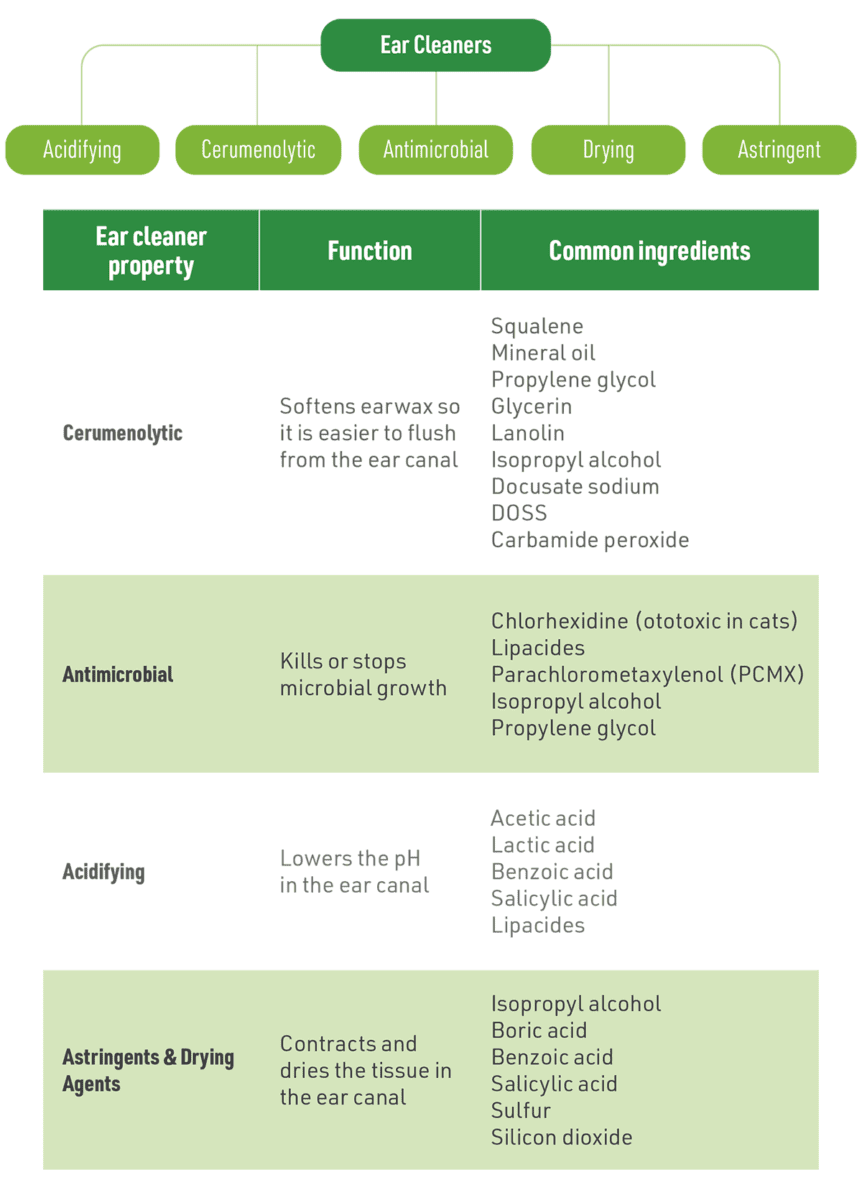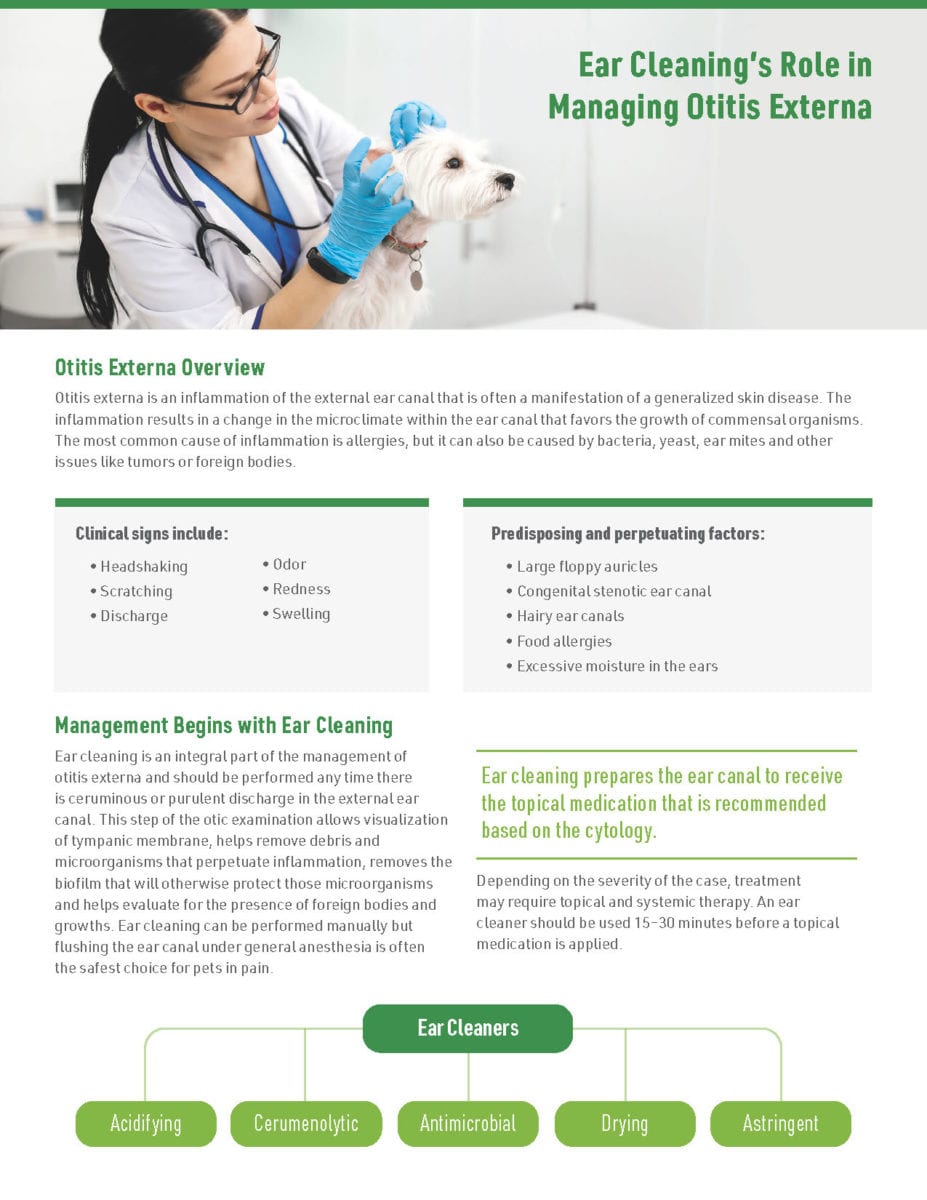Otitis Externa Overview
Otitis externa is an inflammation of the external ear canal that is often a manifestation of a generalized skin disease. The inflammation results in a change in the microclimate within the ear canal that favors the growth of commensal organisms. The most common cause of inflammation is allergies, but it can also be caused by bacteria, yeast, ear mites and other issues like tumors or foreign bodies.
Clinical signs include:
- Head-shaking
- Scratching
- Discharge
- Odor
- Redness
- Swelling
Predisposing and perpetuating factors:
- Large floppy auricles
- Congenital stenotic ear canal
- Hairy ear canals
- Food allergies
- Excessive moisture in the ears
Management Begins with Ear Cleaning
Ear cleaning is an integral part of the management of otitis externa and should be performed any time there is ceruminous or purulent discharge in the external ear canal. This step of the otic examination allows visualization of tympanic membrane, helps remove debris and microorganisms that perpetuate inflammation, removes the biofilm that will otherwise protect those microorganisms and helps evaluate for the presence of foreign bodies and growths. Ear cleaning can be performed manually but flushing the ear canal under general anesthesia is often the safest choice for pets in pain.
Depending on the severity of the case, treatment may require topical and systemic therapy. An ear cleaner should be used 15–30 minutes before a topical medication is applied.
Using an ear cleaner with antimicrobial properties may help in the prevention of biofilm formation. If ulcerations or erosions are present in the ear canal, avoid acidic cleaners and those containing alcohol as they can cause pain and discomfort.
Ear Cleaning at Home
Recurring otitis issues can cause frustrations and doubt for clients. Demonstrating to pet parents how they should use ear cleaners as part of the treatment plan and as a maintenance therapy is critical to improve compliance and the patient’s chances of success. Be sure to caution pet parents against the use of cotton swabs, which can cause further damage. Follow up with clients regularly to see if the pet is cooperating or if they are experiencing issues.


